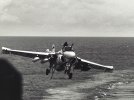Install the app
How to install the app on iOS
Follow along with the video below to see how to install our site as a web app on your home screen.
Note: This feature may not be available in some browsers.
-
Please take a moment and update your account profile. If you have an updated account profile with basic information on why you are on Air Warriors it will help other people respond to your posts. How do you update your profile you ask?
Go here:
Edit Account Details and Profile
You are using an out of date browser. It may not display this or other websites correctly.
You should upgrade or use an alternative browser.
You should upgrade or use an alternative browser.
Height and Aircraft
- Thread starter JWL
- Start date
- Status
- Not open for further replies.
FormerRecruitingGuru
Making Recruiting Great Again
Anyone know the anthro requirements for UAVs?
42%
cookie_monster
Active Member
According to the navy training pipeline, the E-6 and p8/P3 are together, qualifying as one pipeline. My sitting height was too tall for helis. Therefore only qualifying me for one pipeline. Those damn T45s DQ'd me from 2 pipelines. Time to look into the Air Force or guard. I'm actually seriously considering the Army WOFT program. I wanna blow shit up while flying. Akia warheads on foreheads
My 2 cents on this. I was ultimately NPQ'd from SNA due to astigmatism as well as my sitting height. My sitting height is 39.78", measured it twice and then averaged. The T45's max sitting height is 38", which meant I was busted for both Jets and E2/C2. I was also busted for the sitting height on the heli pipeline. Which meant i am only eligible for the maritime patrol pipeline. Only thing is, navy requires you to be eligible for 2 different pipelines. I'm only eligible for 1. I think it would be hard to slouch enough to take off 1.78 inches without the flight surgeon seeing.
At 6'2", who are you, Gumby? (kidding)
Ignoring the issue with your eyes for a moment, from what I see, you're only .3" (1/3 of an inch!) off for helos, and it's only the TH-57. According to the instruction, you're a Code 9, which is fine for R/S, just not the -57. Are you sure you can't go jump off a high curb for 10 minutes and try again?
exNavyOffRec
Well-Known Member
At 6'2", who are you, Gumby? (kidding)
Ignoring the issue with your eyes for a moment, from what I see, you're only .3" (1/3 of an inch!) off for helos, and it's only the TH-57. According to the instruction, you're a Code 9, which is fine for R/S, just not the -57. Are you sure you can't go jump off a high curb for 10 minutes and try again?
I believe his post originally started because he was NPQ for SNA, so any helo's are out for him.
I believe his post originally started because he was NPQ for SNA, so any helo's are out for him.
Right. That's why I said, "ignoring the issue with your eyes..." If he's looking at other services, the eye issue may still be the hold-up.
I see that the tallest astronaut, Jim Wetherbee, was 6'4" and flew the F 18.
How the heck did he fit into the cockpit?
He probably wouldn't be an astronaut today since he most likely wouldn't fit into the Soyuz to get to the International Space station.
It’s actually not that big of a deal to be that tall in a Hornet cockpit. You’ll be as comfortable or uncomfortable as most other pilots that aren’t as tall. The big deal happens in the T-45 cockpit which is noticeably smaller than the Hornet’s.
Let’s help you out here...this guy is too tall:I see that the tallest astronaut, Jim Wetherbee, was 6'4" and flew the F 18.
How the heck did he fit into the cockpit?
He probably wouldn't be an astronaut today since he most likely wouldn't fit into the Soyuz to get to the International Space station.

Make sense?
It really is an amazing story.
Max the Mad Russian
Hands off Ukraine! Feet too
BTW, while visiting CV-12 Hornet at Alameda, I've been told by her museum staff member that V in CV is for "vehicle" as the aircraft heavier than air, embarked on a carrier, back then had the wheels, just like now

I think the person was speaking out of the wrong orifice. "C" stands for carrier, "V" stands for fixed wing.BTW, while visiting CV-12 Hornet at Alameda, I've been told by her museum staff member that V in CV is for "vehicle" as the aircraft heavier than air, embarked on a carrier, back then had the wheels, just like now
I don’t think there’s a definitive answer as to why “V” stands for either “heavier than air (originally)” or “fixed wing (now)”. There’s no final answer in official navy history other than a possible connection to some derivation of the French word to fly, “voler.”BTW, while visiting CV-12 Hornet at Alameda, I've been told by her museum staff member that V in CV is for "vehicle" as the aircraft heavier than air, embarked on a carrier, back then had the wheels, just like now
Additionally most sources point to C meaning “cruiser” as the original carriers were seen to fit in to the cruiser role of scouting. Other cruiser types were CL (light cruiser), CA (armored cruiser originally, eventually heavy cruiser), and CB (large cruiser). So the original designation of CV probably meant something akin to “cruiser, airplane” but they couldn’t use “A” because it was already in use by CA.
- Status
- Not open for further replies.

